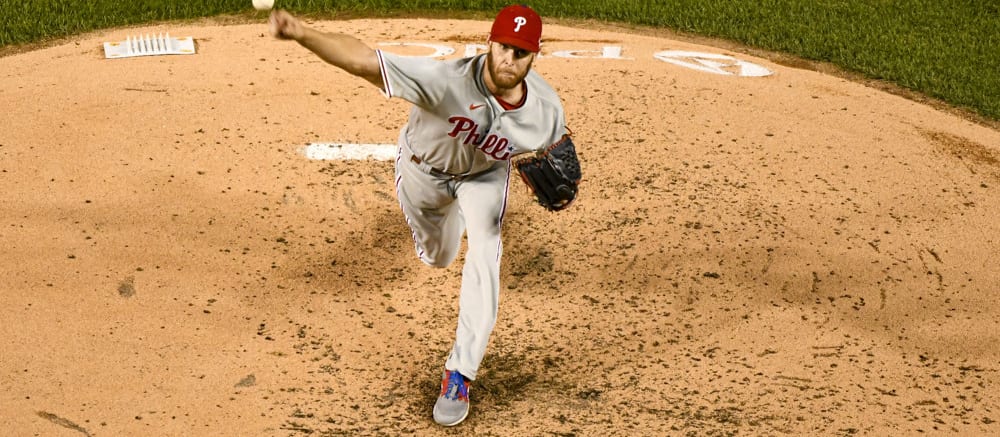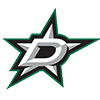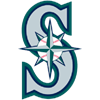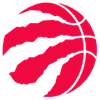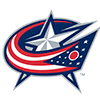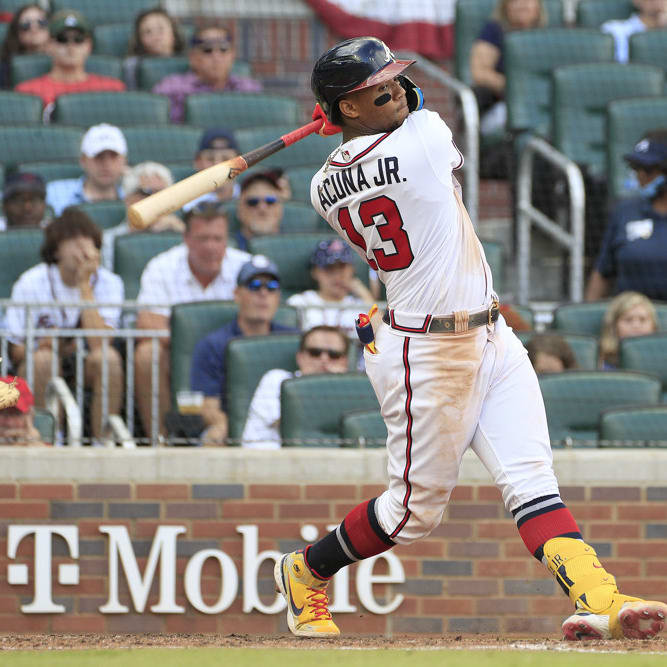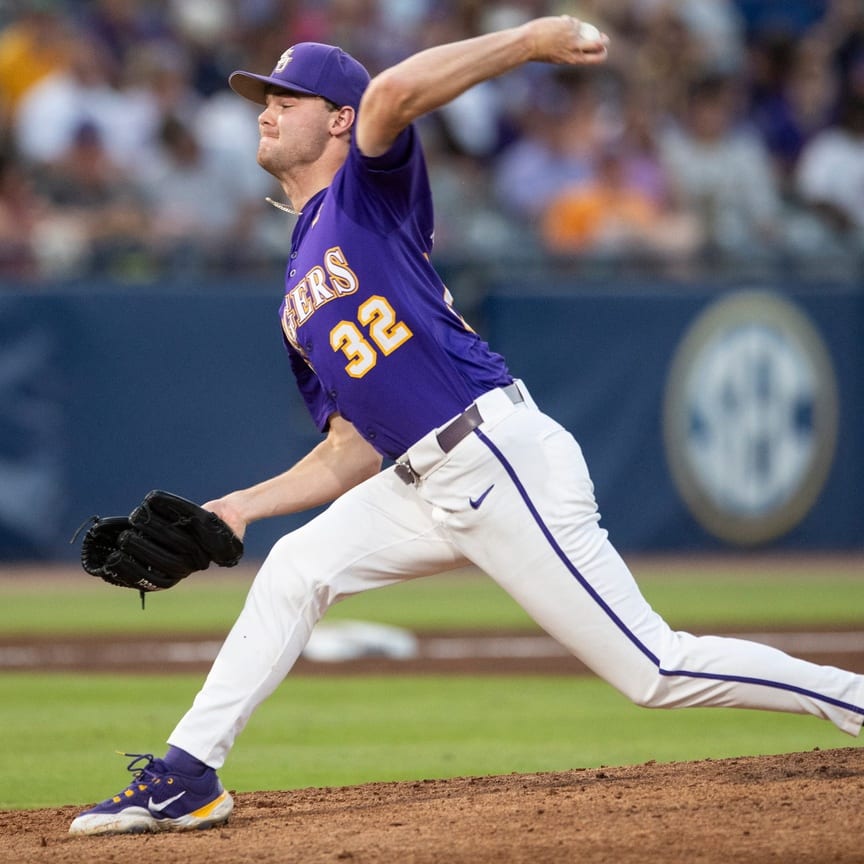The worst-kept secret in MLB is finally official. Well, hopefully, as Commissioner Rob Manfred announced the universal designated hitter will be part of the impending Collective Bargaining Agreement. We had a taste of this in 2020, so what follows is largely a refresher on that discussion, updating the factors for the 2021 campaign.
The question at hand is how the universal designated hitter will affect National League pitchers, and does it have difference impacts on starters and relievers?
A simple approach is to compare ERA, WHIP and other metrics for the two leagues in seasons without the universal designated hitter.
2018
| League | ERA | WHIP | K% | BB% | HR% | BABIP |
|---|---|---|---|---|---|---|
| AL | 4.27 | 1.31 | 22.1% | 8.3% | 3.2% | 0.295 |
| NL | 4.03 | 1.3 | 22.4% | 8.7% | 2.9% | 0.292 |
| Diff | 0.24 | 0.01 | -0.3% | -0.4% | 0.3% | 0.003 |
2019
| League | ERA | WHIP | K% | BB% | HR% | BABIP |
|---|---|---|---|---|---|---|
| AL | 4.62 | 1.35 | 22.7% | 8.5% | 3.7% | 0.298 |
| NL | 4.39 | 1.32 | 23.2% | 8.6% | 3.5% | 0.295 |
| Diff | 0.23 | 0.03 | -0.5% | -0.1% | 0.2% | 0.003 |
2021
| League | ERA | WHIP | K% | BB% | HR% | BABIP |
|---|---|---|---|---|---|---|
| AL | 4.33 | 1.30 | 23.0% | 8.5% | 3.3% | 0.292 |
| NL | 4.03 | 1.30 | 22.4% | 8.7% | 2.9% | 0.292 |
| Diff | 0.30 | 0.00 | 0.6% | -0.2% | 0.5% | 0.000 |
The only oddity in the data is American League pitchers fanning a higher percentage of hitters than their Senior Circuit counterparts. The rest is simple variance.
Some may just add .30 units of ERA to all NL pitchers to get a feel for how they would have performed with a DH last season, but that doesn't work for me. Before explaining the specific
The worst-kept secret in MLB is finally official. Well, hopefully, as Commissioner Rob Manfred announced the universal designated hitter will be part of the impending Collective Bargaining Agreement. We had a taste of this in 2020, so what follows is largely a refresher on that discussion, updating the factors for the 2021 campaign.
The question at hand is how the universal designated hitter will affect National League pitchers, and does it have difference impacts on starters and relievers?
A simple approach is to compare ERA, WHIP and other metrics for the two leagues in seasons without the universal designated hitter.
2018
| League | ERA | WHIP | K% | BB% | HR% | BABIP |
|---|---|---|---|---|---|---|
| AL | 4.27 | 1.31 | 22.1% | 8.3% | 3.2% | 0.295 |
| NL | 4.03 | 1.3 | 22.4% | 8.7% | 2.9% | 0.292 |
| Diff | 0.24 | 0.01 | -0.3% | -0.4% | 0.3% | 0.003 |
2019
| League | ERA | WHIP | K% | BB% | HR% | BABIP |
|---|---|---|---|---|---|---|
| AL | 4.62 | 1.35 | 22.7% | 8.5% | 3.7% | 0.298 |
| NL | 4.39 | 1.32 | 23.2% | 8.6% | 3.5% | 0.295 |
| Diff | 0.23 | 0.03 | -0.5% | -0.1% | 0.2% | 0.003 |
2021
| League | ERA | WHIP | K% | BB% | HR% | BABIP |
|---|---|---|---|---|---|---|
| AL | 4.33 | 1.30 | 23.0% | 8.5% | 3.3% | 0.292 |
| NL | 4.03 | 1.30 | 22.4% | 8.7% | 2.9% | 0.292 |
| Diff | 0.30 | 0.00 | 0.6% | -0.2% | 0.5% | 0.000 |
The only oddity in the data is American League pitchers fanning a higher percentage of hitters than their Senior Circuit counterparts. The rest is simple variance.
Some may just add .30 units of ERA to all NL pitchers to get a feel for how they would have performed with a DH last season, but that doesn't work for me. Before explaining the specific process I've undertaken, let's review a bit of general projection theory.
There is no right method; everyone who does it adds their own nuances. My system neutralizes each season's stats, then employs a weighted average to derive a neutral baseline. It distills a profile down to skills, which are then adjusted contextually for the player's home park and division. The final step is to apply playing time, to convert skills to outcomes.
The pertinent aspect for this discussion is yearly neutralization. As implied, the venue and division biases are fleshed out. In addition, the numbers from all non-DH years incorporated into the neutral baseline need to be adjusted as if the hurler faced a designated hitter. I normally use a three-year weighted average, but with the truncated 2020 season in the mix, I'm carrying over 2018, albeit to a small degree and then subjectively making the call if the pitcher has changed enough to disregard that season.
It's fair to wonder if the run environment from each season is neutralized. For example, in 2019, increased homers inflated ERA. Sparing you the math, using a weighted average without adjusting ERA predicts the next season to around 97 percent accuracy. To put that in perspective, a 4.32 ERA is 3.2 percent below 4.46. The accuracy of WHIP, K%, BB%, BABIP and AVG are all better than ERA, while HR% is worse.
My feeling is that estimating the following season's environment isn't needed. The mere fact MLB has been monkeying with the ball is reason enough not to bother. For fantasy purposes, the key is how players rank relative to each other. The run environment might be incorrectly projected, but so long as everyone is affected similarly, the relative ranks will not change. Sure, if the culprit is homers then not everyone is influenced the same, but in the big picture trying to capture the impending run environment is an exercise in futility.
OK then, what should be done? In short, my handling strips out the NL pitchers' numbers when facing other pitchers, then adds in the same number of plate appearances as though they'd faced a DH. The catch is this involves making a few assumptions.
The first assumption is that each pitcher's outcomes when facing pitchers match league average. In such small samples, this clearly isn't the case, but the sample size issue renders identifying specific patterns to be statistically insignificant.
Similarly, adjusting globally presumes each pitcher fares the same against a designated hitter. That is, each hurler's K%, BB% etc. is adjusted proportionately. Here, there is no choice since there isn't anything other than 2020 data to gauge how everyone performed when facing a DH. Along those lines, it is taken for granted DH production in the NL will match that of the AL (and the few interleague matchups for the NL) -- another instance where something is not guaranteed, but we march ahead anyway.
The final supposition has to do with the series of events that occur before or after the pitcher or designated hitter is at the plate. Innings would have obviously played out differently, but all we have are the stats that occurred. For example, it is known pitcher's skills are affected by working from the windup or stretch, and these occurrences would have changed with a designated hitter in the opposition lineup instead of a pitcher.
That sets the background; it's time to get numbery. To reiterate, the notion is to strip out the numbers when facing pitchers, then add in PAs against designated hitters. The skills under investigation are K%, BB%, HR% and BABIP.
PITCHERS BATTING
Season | K% | BB% | HR% | BABIP |
|---|---|---|---|---|
2018 | 41.50% | 3.00% | 0.48% | 0.208 |
2019 | 43.10% | 3.10% | 0.47% | 0.247 |
2021 | 44.30% | 3.70% | 0.31% | 0.216 |
DESIGNATED HITTERS BATTING
Season | K% | BB% | HR% | BABIP |
|---|---|---|---|---|
2018 | 23.10% | 9.30% | 4.43% | 0.292 |
2019 | 25.00% | 10.70% | 4.74% | 0.297 |
2021 | 24.30% | 9.10% | 4.47% | 0.288 |
Let's walk through adjusting Zack Wheeler's K% from last year.
K% | Total PA | Non-P PA | P PA |
|---|---|---|---|
29.1% | 849 | 792 | 57 |
The first step is to calculate Wheeler's K% in non-pitcher plate appearances. Here is the algebra:
K% = (Non-P PA x Non-P K% + P PA x P K%)/Total PA
Non-P PA x Non-P K% + P PA x P K% = K% x Total PA
Non-P PA x Non-P K% = K% x Total PA - P PA x P K%
Non-P K% = (Total PA x K% - P PA x P K%) / Non-P PA
Plugging in numbers:
Non-P K% = (849 x 29.1% - 57 x 44.3%) / 792 = 28.0%
The final step is to substitute the K% facing a DH for the P-PA to get the Adjusted K%. Here is the algebra:
Adjusted K% = (Non P PA x Non P K% + Non P PA x DH K%) / Total PA
With actual numbers:
Adjusted K% = (792 x 28.0% + 57 x 24.3%) / 849 = 27.8%
Wheeler's actual K% was 29.1 percent. The adjusted level if he'd faced designated hitters instead of pitchers would have been 27.8 percent. This equates to about 11 fewer punchouts for the 2021 season.
This adjustment is conducted for each of the relevant skills for all NL pitchers. The adjusted skills are inputs for my black box, with the output being ERA, WHIP and strikeouts.
In the interests of full disclosure, it is a little more complicated, since the skills for starters and relievers are slightly different. It's straightforward coding to have my black box handle the difference.
Clearly, 99 44/100th percent of fantasy baseball players are not going to go through the above exercise. To that end, here is the 2021 converted data for several NL pitchers, so you have a feel for how expectations may change in 2022 when the only pitcher batting will be Shohei Ohtani.
| Pitcher | IP | ERA | adjERA | WHIP | adjWHIP | K | adjK |
|---|---|---|---|---|---|---|---|
| Zack Wheeler | 213.1 | 2.78 | 3.11 | 1.01 | 1.05 | 247 | 235.6 |
| Sandy Alcantara | 205.2 | 3.19 | 3.47 | 1.07 | 1.11 | 201 | 191.4 |
| Adam Wainwright | 206.1 | 3.05 | 3.34 | 1.06 | 1.10 | 174 | 163.6 |
| Walker Buehler | 207.2 | 2.47 | 2.78 | 0.97 | 1.01 | 212 | 201 |
| Luis Castillo | 187.2 | 3.98 | 4.31 | 1.36 | 1.42 | 192 | 181 |
| Kyle Hendricks | 181 | 4.77 | 5.07 | 1.35 | 1.40 | 131 | 121.2 |
| Tyler Mahle | 180 | 3.75 | 4.06 | 1.23 | 1.28 | 210 | 200 |
| Charlie Morton | 185.2 | 3.34 | 3.72 | 1.04 | 1.09 | 216 | 206.4 |
| German Marquez | 180 | 4.4 | 4.79 | 1.27 | 1.32 | 176 | 165.8 |
| Patrick Corbin | 171.2 | 5.82 | 6.17 | 1.47 | 1.52 | 143 | 132.8 |
| Aaron Nola | 180.2 | 4.63 | 5.00 | 1.13 | 1.17 | 223 | 213.8 |
| Joe Musgrove | 181.1 | 3.18 | 3.52 | 1.08 | 1.13 | 203 | 192.6 |
| Julio Urias | 185.2 | 2.96 | 3.28 | 1.02 | 1.06 | 195 | 185.4 |
| Marcus Stroman | 179 | 3.02 | 3.28 | 1.15 | 1.19 | 158 | 149 |
| Brandon Woodruff | 179.1 | 2.56 | 2.86 | 0.96 | 1.01 | 211 | 202 |
| Max Scherzer | 179.1 | 2.46 | 2.77 | 0.86 | 0.91 | 236 | 227 |
| Wade Miley | 163 | 3.37 | 3.63 | 1.33 | 1.37 | 125 | 116.2 |
| Yu Darvish | 166.1 | 4.22 | 4.58 | 1.09 | 1.14 | 199 | 189.8 |
| Anthony DeSclafani | 167.2 | 3.17 | 3.46 | 1.09 | 1.14 | 152 | 143.4 |
| Antonio Senzatela | 156.2 | 4.42 | 4.77 | 1.34 | 1.39 | 105 | 96 |
| Zach Davies | 148 | 5.78 | 6.19 | 1.60 | 1.66 | 114 | 103.6 |
| Merrill Kelly | 158 | 4.44 | 4.78 | 1.29 | 1.34 | 130 | 120.8 |
| Max Fried | 165.2 | 3.04 | 3.37 | 1.09 | 1.14 | 158 | 149.2 |
| Corbin Burnes | 167 | 2.43 | 2.79 | 0.94 | 0.98 | 234 | 225.8 |
Circling back to one of the first charts, the ERA delta between the leagues was greatest last season. The difference is usually smaller. That said, the differences between the actual and adjusted ERA per pitcher all cluster around the 0.30 league differential.
While it is better to make some level of adjustment, even if it's only adding the league-wide difference to each pitcher, the method is flawed. This is reflected in WHIP. Note the 2021 WHIP for each league was the same, but an adjustment is present in the above table. One of the flaws of the methodology is that the raw number of plate appearances and innings would have changed if NL pitchers faced designated hitters, but these numbers were not adjusted. Sure, they can be estimated, and perhaps the adjustment can be fine-tuned a bit, but there comes a time at which false precision comes into play. The organic variance with ERA, homers, hits, etc. masks the incremental tightening of the metrics. If you're drafting a guy solely because he has a 1.11 projected WHIP over one with a 1.13 mark, you're doing it wrong.
As has been mentioned, the casual or even serious player isn't going to adjust to this extent. The important factor to keep in mind is the ERA of an NL pitcher is going to increase, likely around 0.2 over what would be expected facing pitchers. Here, the difference between a 3.55 guy and 3.75 guy is relevant.
We'll leave you with one last table, ranking last season's top-25 starters (minimum 150 innings) according to ERA, with their ranking for the adjusted ERA where applicable.
| Pitcher | Innings | ERA | RANK | adj ERA | adj RANK |
|---|---|---|---|---|---|
| Corbin Burnes | 167 | 2.43 | 1 | 2.79 | 4 |
| Max Scherzer | 179.1 | 2.46 | 2 | 2.77 | 2 |
| Walker Buehler | 207.2 | 2.47 | 3 | 2.78 | 3 |
| Brandon Woodruff | 179.1 | 2.56 | 4 | 2.86 | 6 |
| Lance Lynn | 157 | 2.69 | 5 | 2.71 | 1 |
| Zack Wheeler | 213.1 | 2.78 | 6 | 3.11 | 8 |
| Kevin Gausman | 192 | 2.81 | 7 | 3.08 | 7 |
| Robbie Ray | 193.1 | 2.84 | 8 | 2.84 | 5 |
| Julio Urias | 185.2 | 2.96 | 9 | 3.28 | 12 |
| Marcus Stroman | 179 | 3.02 | 10 | 3.28 | 13 |
| Max Fried | 165.2 | 3.04 | 11 | 3.37 | 16 |
| Adam Wainwright | 206.1 | 3.05 | 12 | 3.34 | 14 |
| Chris Bassitt | 157.1 | 3.15 | 13 | 3.15 | 9 |
| Lance McCullers | 162.1 | 3.16 | 14 | 3.16 | 10 |
| Anthony DeSclafani | 167.2 | 3.17 | 15 | 3.46 | 17 |
| Joe Musgrove | 181.1 | 3.18 | 16 | 3.52 | 20 |
| Sandy Alcantara | 205.2 | 3.19 | 17 | 3.47 | 18 |
| Gerrit Cole | 181.1 | 3.23 | 18 | 3.23 | 11 |
| Charlie Morton | 185.2 | 3.34 | 19 | 3.72 | 25 |
| Frankie Montas | 187 | 3.37 | 20 | 3.37 | 15 |
| Wade Miley | 163 | 3.37 | 21 | 3.63 | 24 |
| Luis Garcia | 155.1 | 3.48 | 22 | 3.48 | 19 |
| Jose Berrios | 192 | 3.52 | 23 | 3.52 | 21 |
| Lucas Giolito | 178.2 | 3.53 | 24 | 3.53 | 22 |
| Chris Flexen | 179.2 | 3.61 | 25 | 3.61 | 23 |


